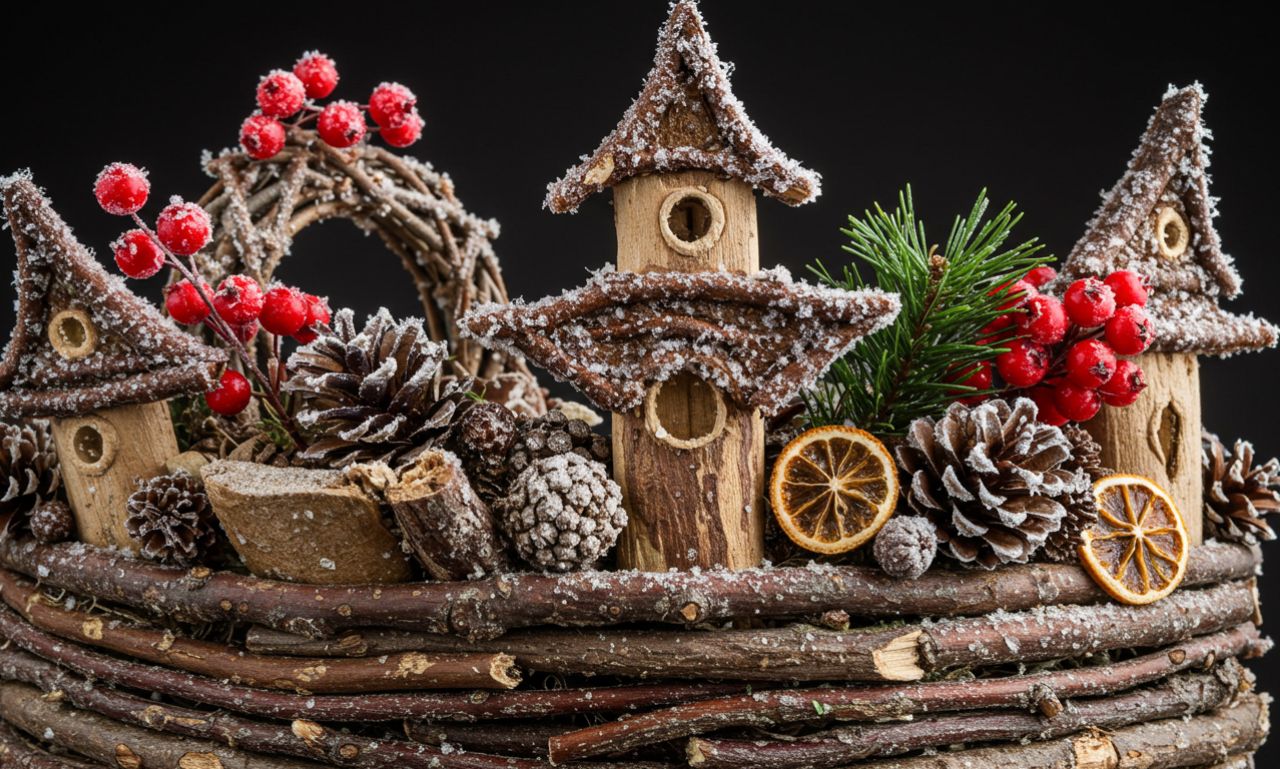The term pyntekvister comes from Scandinavian languages, where it literally translates to “decorative branches.” Traditionally, these are twigs or branches collected from nature and arranged as part of seasonal home décor. In many Nordic households, pyntekvister are placed in vases, tied together with ribbons, or decorated with ornaments to bring a touch of nature indoors.
What makes pyntekvister special is their versatility. They can be simple bare branches or adorned with flowers, leaves, or festive items depending on the season. Over time, it has evolved from rural tradition to a global interior design trend embraced by minimalists, florists, and eco-conscious decorators.
Why Pyntekvister Are Popular in Modern Homes
In today’s world of mass-produced décor, it stand out for several reasons:
-
Eco-friendliness – They are natural, renewable, and biodegradable.
-
Affordability – Collecting branches from nature is cost-free.
-
Versatility – They can be minimalistic or heavily decorated.
-
Cultural appeal – They reflect timeless Scandinavian aesthetics.
Minimalist interior design movements, particularly “hygge” and “lagom,” often showcase it as centerpieces. Their raw, organic look complements clean lines and natural light in modern homes.
Pyntekvister in Seasonal Celebrations
Easter Pyntekvister
One of the most iconic uses of it is during Easter in Norway and Sweden. Families decorate birch twigs with brightly colored feathers and small ornaments, placing them in vases as centerpieces. These symbolize life, joy, and the rebirth of spring.
Christmas Pyntekvister
In winter, spruce or pine branches serve as it. Hung with stars, lights, or ornaments, they bring festive cheer without requiring a full Christmas tree. For many urban dwellers with limited space, it act as a minimalist alternative.
Spring and Summer Pyntekvister
During warmer months, pyntekvister with budding flowers or green leaves add freshness indoors. They often complement floral arrangements or outdoor gatherings.
How to Create Pyntekvister Arrangements
-
Choose Your Branches
Select twigs based on the season—fresh and budding for spring, evergreen for winter. -
Prepare the Base
Place them in a vase or tie them with rustic twine. -
Decorate Accordingly
-
Feathers and eggs for Easter
-
Fairy lights for Christmas
-
Dried flowers for autumn
-
Fresh blossoms for spring
-
-
Position with Purpose
Display in hallways, dining tables, or windowsills where natural light highlights them.
This flexibility ensures that pyntekvister remain relevant across styles—rustic, modern, or traditional.
The Role of Pyntekvister in Interior Design
Interior designers increasingly incorporate pyntekvister because they:
-
Add vertical height and structure to a room.
-
Create natural focal points without overwhelming other décor.
-
Blend with Scandinavian and minimalist aesthetics.
-
Symbolize connection with nature, appealing to wellness-focused homeowners.
Magazines and social media platforms often showcase pyntekvister as part of simple yet elegant room styling.
Eco-Friendly Appeal of Pyntekvister
Sustainability is one of the strongest reasons behind the rising popularity of pyntekvister. Unlike plastic or synthetic decorations:
-
They decompose naturally.
-
They reduce dependence on artificial décor.
-
They encourage outdoor activity, as many people collect branches themselves.
For eco-conscious consumers, pyntekvister are not just decoration—they are a lifestyle choice.
DIY Crafts with Pyntekvister
Creative minds use pyntekvister in craft projects such as:
-
Wreaths and garlands
-
Centerpieces with candles
-
Hanging ornaments
-
Painted branches with metallic finishes
This adaptability ensures that it can be enjoyed by both adults and children, making seasonal decorating interactive and fun.
Modern Innovations
While traditional it remain popular, modern trends include:
-
LED-integrated branches for ambient lighting.
-
Painted branches in gold, silver, or pastel hues.
-
Dried flower combinations for year-round displays.
-
Minimalist single-branch décor in sleek vases.
These innovations bridge tradition with contemporary living.
How Pyntekvister Differ from Floral Arrangements
Though similar to floral décor, pyntekvister focus more on branches than blooms. While flowers symbolize color and fragrance, it emphasize structure, durability, and seasonal symbolism. They last longer than flowers and require minimal maintenance.
Global Influence
Thanks to social media platforms like Pinterest and Instagram, it have spread beyond Scandinavia. Home décor enthusiasts across Europe, North America, and Asia now adapt them to local traditions—combining them with cherry blossoms in Japan or eucalyptus in Australia.
Pyntekvister and Wellness Trends
In wellness-oriented lifestyles, it represent grounding and mindfulness. Decorating with branches encourages slow living, seasonal awareness, and deeper connection with the natural world.
Tips for Styling
-
Pair with neutral ceramics for a minimal look.
-
Use contrasting textures—wood branches with glass vases.
-
Match seasonal colors (green for spring, red for winter).
-
Keep arrangements uncluttered for elegance.
Outdoor Décor
Beyond indoor styling, it also appear outdoors:
-
Garden centerpieces for seasonal parties.
-
Porch displays during holidays.
-
Pathway arrangements with lanterns or ribbons.
They offer charm without requiring extensive landscaping.
Future of Pyntekvister Décor
The future looks bright for it as eco-friendly, sustainable décor grows globally. Designers are integrating them into smart homes, where lighting and sensors enhance seasonal displays. Their enduring appeal rests in their simplicity and deep cultural meaning.
Conclusion
Pyntekvister embody tradition, sustainability, and timeless beauty. Rooted in Nordic culture yet adaptable worldwide, they bridge natural elements with modern design. Whether used in Easter celebrations, Christmas displays, or year-round minimalistic interiors, it remain a symbol of creativity and eco-conscious living.
For homeowners seeking sustainable and elegant décor, they are more than branches—they are a celebration of nature indoors.
